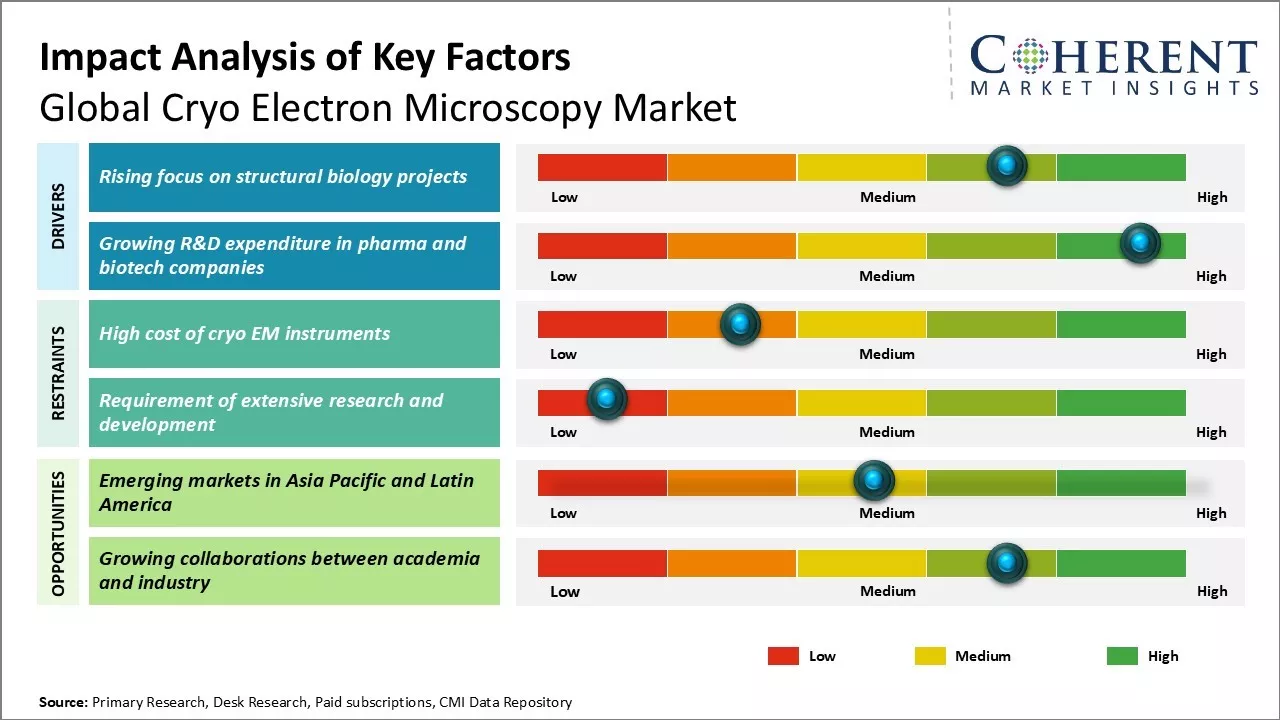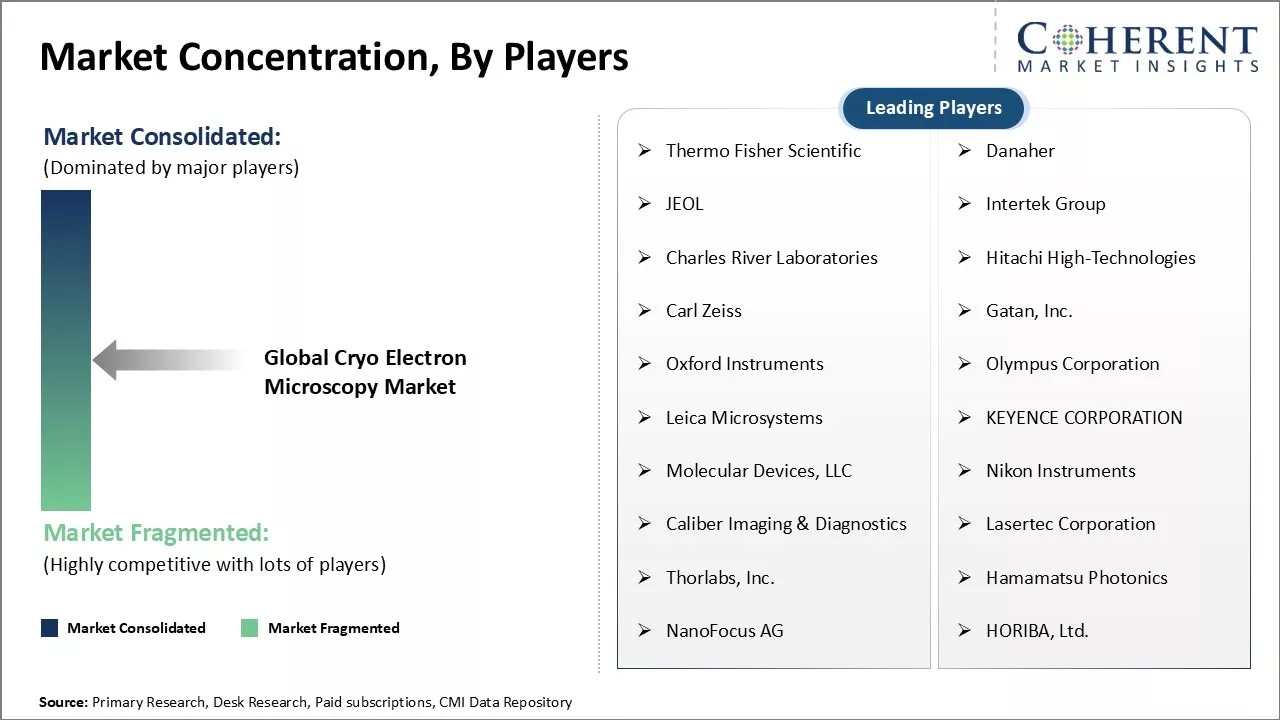The Global Cryo Electron Microscopy Market is estimated to be valued at USD 1.30 Billion in 2024 and is expected to reach USD 2.81 Billion by 2031, exhibiting a compound annual growth rate (CAGR) of 11.6% from 2024 to 2031.

To learn more about this report, Request sample copy
The global cryo electron microscopy market is expected to witness significant growth over the forecast period. The market growth is driven by factors such as rising funding for cryo-EM from government and private organizations, technological innovations such as direct electron detectors and patterned beam technologies, and increasing applications of cryo-EM in drug discovery, material science, and healthcare industries. Furthermore, the high demand for cryo-EM over other microscopes owing to its ability to capture images at an atomic level with minimal sample preparation is also expected to support market growth during the projected period. However, the high cost of cryo-EM systems and technical challenges associated with sample preparation and imaging may hinder the market growth to some extent.
Rising focus on structural biology projects
The global cryo electron microscopy market has been growing significantly over the past few years. One of the key drivers for this growth has been the rising focus on structural biology projects around the world. Structural biology involves determining the three-dimensional structure of biological macromolecules like proteins and nucleic acids. This information provides crucial insights into their function and mechanisms. Over the past decade, there has been a dramatic rise in structural biology projects aimed at furthering our understanding of important biological processes and furthering drug discovery efforts.
Several disease specific structural biology initiatives and protein structure databases have been launched by funding agencies and academic institutions. For example, the Protein Data Bank which is one of the largest repositories of 3D structural data of biological molecules now contains over 150,000 structures including many determined using cryo electron microscopy techniques. Cryo EM has emerged as the method of choice for many such structural determination projects due to its ability to resolve large molecular complexes without the need for crystallization. The technique has helped successfully determine the structure of several challenging targets like membrane proteins and viruses which were previously difficult to study using other methods.
The rising popularity of structural biology and the applicability of cryo EM to wider range of targets have led to increasing number of cryo EM facilities being set up globally. National labs, academic institutions as well as private sector players have invested in high-end cryo electron microscopes to support in-house structural research. While traditional X-ray crystallography continues to be widely used, cryo EM is attracting a growing user base and number of projects due to its unique advantages. The structural insights gained through these efforts are helping advance research in diverse areas ranging from infectious diseases to neurodegenerative conditions. This expanding scope and applicability of cryo EM technique for structural determination augurs well for future growth of the global cryo electron microscopy market.

To learn more about this report, Request sample copy
Growing R&D expenditure in pharma and biotech companies
Another key growth driver for cryo electron microscopy market has been rising R&D investments by pharmaceutical and biotechnology companies. Cryo electron microscopy is increasingly becoming a core technology for structural biology programs in the pharmaceutical industry. The technique helps in expediting projects involving structure determination of protein drug targets, lead candidate molecules as well as larger complexes involved in diseases. The three-dimensional structural data provided helps in computer aided drug design to optimize lead candidates at a much faster pace than was previously possible. Many leading pharmaceutical companies have made major investments to set up in-house cryo EM centers staffed with expert microscopists and supporting infrastructure.
Moreover, the improved resolution capabilities of the latest generation cryo electron microscopes coupled with innovations in cryo EM workflows have further increased their utility. For example, structural studies are now possible on smaller targets like drug fragments which were challenging earlier. This expands the scope of cryo EM applications considerably. With continued growth in biopharma R&D spending anticipated in the coming years on technological innovations, demand for cryo electron microscopes and associated services from this end-user segment is expected to rise substantially. This will remain a key growth driver for the global cryo electron microscopy market.
Joining thousands of companies around the world committed to making the Excellent Business Solutions.
View All Our Clients